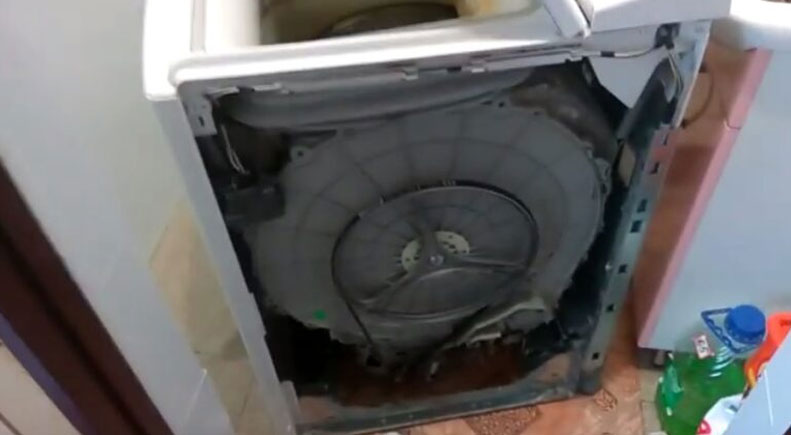How to Replace a Top Load Washing Machine Drum Flange

The weak point of vertical automatic machines is considered to be the drum flange. If it is damaged, the owners of the washing machine will face expensive repairs. Is it possible to replace the part yourself? What will be required during the work? Let's look into the nuances.
What will be needed for repairs?
It is quite possible to replace the drum flange yourself, at home. To repair it, you will have to disassemble the top-loading washing machine and remove the drum from it. The following tools will be needed in the process:
- Slotted and Phillips screwdrivers,
- Screwdriver or drill,
- Drills with a diameter of 5 and 6 mm,
- Six bolts with a pin and washer (M5 or M6),
- Spanner.
To replace the drum flange, you need to remove the tank from the vertical housing. This is done as follows:
- De-energize the washing machine,
- Disconnect the vertical pump from the water supply and sewerage system,
- Use a screwdriver to unscrew the fasteners that secure the back wall of the washing machine,
- Remove the back panel,
- Move the side panel of the case to the side and remove it too,
- Disconnect all pipes and wires from the tank, having first photographed the position of each element,
- Remove the screw holding the shaft,
- Close the loading door and remove the tank.
Next, the tank needs to be disassembled and the drum removed from it. On top-loading washing machines, this is done in the same way as on front-loading machines. Then you can start replacing the flange.
Removing a damaged flange
The drum flange is a support for top-loading washing machines. It is installed on the opposite side from the pulley and is fixed with a set of fasteners. When dismantling, the old element may collapse, and there is nothing to worry about.
The easiest way to order components is online. Today, online stores offer customers absolutely any parts for automatic washing machines with both front and top loading. You can also try to look for a flange in retail outlets in your city. The average cost of a part is 1000-1500 rupees.
The old flange may be badly damaged, and you should be prepared for this. To dismantle it, take a drill or screwdriver and insert a drill into the tool. Next:
- Drill out all 6 rivet fasteners on the flange using a 5 mm drill (this should be done at low speeds so that the drill does not overheat),
- Change the drill bit, installing a 6mm one in the drill,
- Drill the same holes with a 6 mm drill.
As a result of these actions, the fasteners will be removed and the flange will be destroyed. Thus, it is quite easy to dismantle the old part. Before installing a new element, the seat must be cleaned of debris, dirt and limescale.
Installing a new flange and assembling the machine
The next step is to install a new flange. You need to prepare six bolts with a pin and washer and a wrench of the appropriate size. The further algorithm of actions will be as follows:
- Place the new flange in place, aligning the holes on the part with the drilled holes in the drum,
- Screw the bolts through the engraver into the holes (the flat side should be inside the drum so that in the future the laundry does not get caught on the protruding washers),
- Tighten each washer with a wrench.
The main difficulty in replacing the drum flange is not in dismantling and installing the part itself, but in disassembling the washing machine. To replace the element, you will have to remove the tank from the vertical, and then reassemble the body.
After installing the new drum flange, assemble the top-loading washing machine. The sequence of actions will be as follows:
- Insert the drum into the lower half of the tank,
- Install the top of the tank, assemble the container,
- Place the seal on the shaft, treat the rubber with a special lubricant, and place the sealing sleeve on top,
- Install a horizontal metal bar on top and secure the structure with screws,
- Put another previously removed metal strip back in place and secure it with three bolts,
- Install the pulley, securing the "drum wheel" with a screw,
- Turn the tank over and do the same on the other side (install the seal and the bushing, treat the unit with grease, install the metal strips),
- Spin the drum, make sure that nothing is interfering with its rotation,
- Place the tank-drum unit into the washing machine body,
- Connect all previously disconnected parts, pipes and wires to the tank,
- Fix the side wall of the case and the rear panel of the "vertical".
If everything is done correctly, the machine will start working without any complaints. There should be no extraneous noises when the drum rotates. After the test wash is finished, you can use the vertical machine in the normal mode.



